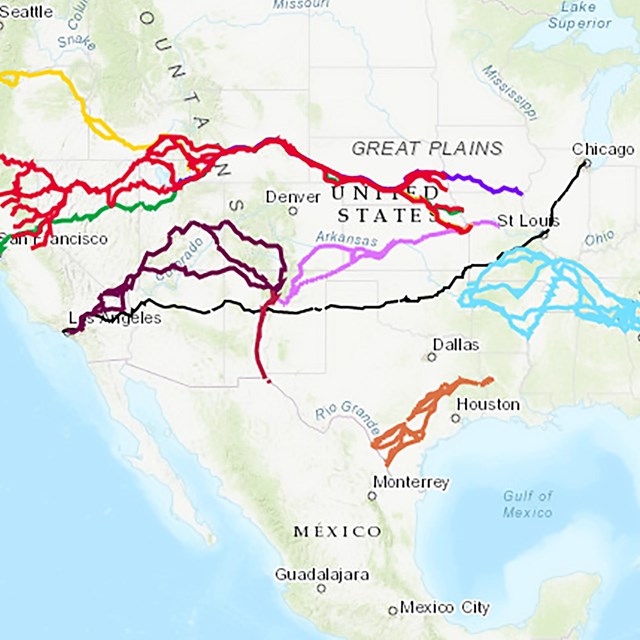Last updated: May 21, 2023
Article
Trail of Tears: Missouri, Illinois, & Kentucky Itinerary
Routes through Kentucky and Illinois
Water Route
Cherokee on the land route traveled through a bitter winter that led to delays at icy river crossings and poor road conditions. In some cases, a road was built to provide a path for Indian Removal.
Land Route Benge
The Benge detachment left Fort Payne, Alabama, on September 28, 1838. They crossed the river the Mississippi River from Columbus (Iron Banks), Kentucky, to Belmont, Missouri. It took 1,200 people on this journey 111 days to reach Indian Territory.
Water
Three detachments of nearly 3,000 Cherokee left Ross’ Landing in June 1838. The last detachment, which included Chief John Ross, departed in December 1838. The time it took for these detachments to complete their trip varied from 13 to 103 days. They followed the Tennessee, Ohio, Mississippi, and Arkansas rivers.
Northern
Eight Northern Route detachments left the Fort Cass, Tennessee, area in August and September 1838. The journey included more than 8,000 people and took between 125 and 188 days.
Northern with Variations
Three detachments of over 3,600 Cherokee took variations of the Northern Route in September and October, leaving from Fort Cass and Vann’s Town, taking between 152 and 189 days.
Northern Route
- Trail Of Tears National Historic Trail
Berry's Ferry
This is a crossing used by thousands of Cherokee to cross the Ohio River. While others crossed or the bitterly cold weather did not permit, they waited at Mantle Rock.
- Trail Of Tears National Historic Trail
Golconda, Illinois
- Trail Of Tears National Historic Trail
Mantle Rock
- Trail Of Tears National Historic Trail
Trail of Tears Commemorative Park, Hopkinsville, KY

The Commemorative Park was once the location of a winter camp and ration stop along the Northern Route of the Trail of Tears. Explore exhibits inside the heritage center and along the park’s walking paths which tell the story of the Trail and two prominent Cherokee leaders who died while camped here. Visit the statue garden, flag memorial, and walk a short woodland trail with picnic tables and locations for reflection.
Water & Benge Routes
- Trail Of Tears National Historic Trail
Columbus Belmont State Park
- Trail Of Tears National Historic Trail
Belmont, Missouri
Belmont was on the other side of the Mississippi River from the Columbus-Belmont crossing in Kentucky. This site is popularly known for it's Civil War history, but the crossing existed before the war and was a part of Trail of Tears history. At this site visitors can see a wayside about geography of the trail.
- Trail Of Tears National Historic Trail
Paducah Waterfront

The Trail of Tears Historic Trail commemorates one of the few water route sites where detachments are known to have stopped. The trail observes the Cherokee tribe stopping for supplies in Paducah after being forced to relocate west to Indian Territory. Located at the entrance to the floodwall in downtown Paducah, visitors are surrounded by history as they read about the tragic story of the 1838 Indian Removal Act and why Paducah plays a significant role in its history.










